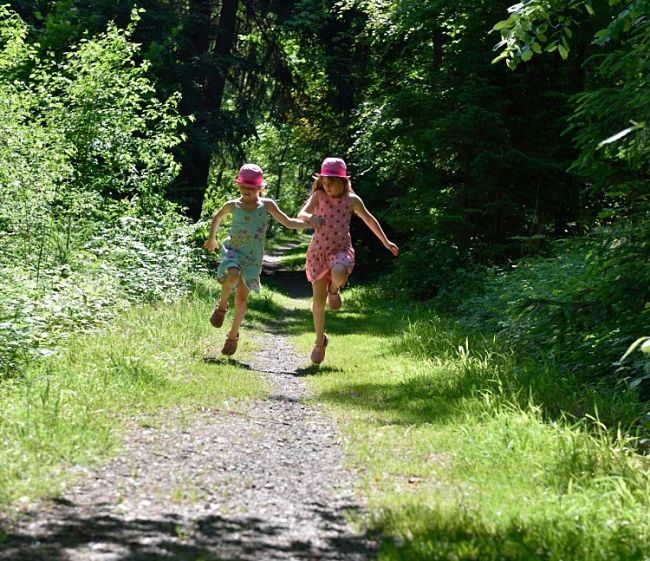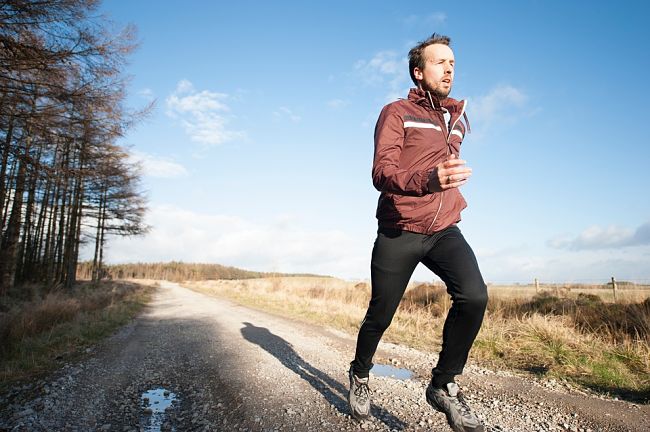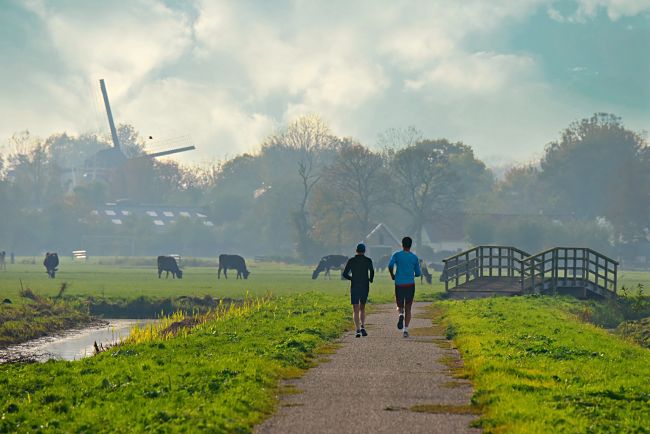Pros and Cons of Trail Versus Road Running Options
First and foremost you will need to consider getting the correct footwear for the road or trail to protect your feet and lower limbs from injury. You may need two pairs of shoes - specifically designed for each surface. Roads are hard and you need extra cushioning. Trails are uneven and you need shoe soles that cope with this and have a wider tread. Running on Sand at the beach or shore is another option
Your stride, gait and body positioning may need to change. Trails have inclines and turns and changes in surface and track conditions. On the road you can assume a fixed gait and your body position and pace will be relatively fixed and steady. On a trail run you will generally have to vary your pace and gait to adjust to the conditions.
In some cases, including a trail section, on a road run may be the way to go. Often this will occur anyway as you will need to get to the trail by running on the road to get there and begin. You may need general purpose shoes for this combo. Likewise there may be many trails on offer in your area. You may need to consider various characteristics such as slope, surface and environs before choosing the one that suits you best.
Generally most people will run farther on a trail and exert more energy as the environs helps to inspire them. However, the hills and surface changes may be a challenge, slowing you down and causing tiredness. Road running is preferred by those who like to run at an even pace with a fixed stride. See: How to Run Faster and Longer by Using your Magic Pace
This article looks at the various pros and cons of road and trail types of running to help you make the right choice.

Benefits of Open Trail Running
Many runners extol the benefits of trail running including many famous marathon runners such as the Australian, Robert de Castella, who loved runs through the pine forests around Canberra. To these people there is nothing better than avoiding the noise, hassles and hot hard bitumen behind and escaping into the inspiring expanse of nature. To many runners it is a more mindful and relaxing way to run that encompasses the love and exhilaration of your natural surroundings.
When you run on trails, the variation in the terrain is a lot more demanding, requires closer attention. You cannot just switch off like you may do on a quiet road run. While more demanding the surface variations can be beneficial. Coping with the uneven ground, rocks, the occasional tree roots, the mud and puddles, the slopes, the twists and turns, all help improve your agility, sense of balance and reaction time. Many people like to keep their brains engaged when they run. The varied terrain has other benefits as well as running on a trail burns roughly 10% more calories than running for the same distance on a road.
Trail running can less jarring for joints, as the surface you run on has more give than the bitumen and concrete of pavements, paths and roads. The softest surface is the sand on the beach. Surprisingly, despite the seemingly uneven and somewhat for difficult terrain, injuries caused by repetitive motion and overuse and less likely with running on trails. Your foot strike and stride varies so much more than with road running, as you negotiate the variation in terrain and surfaces on a trail run.
There is virtually no risk of getting bored on a trail run, as the scenery is forever changing and there is so much natural beauty to enjoy. The peace of the open air is also a joy compared with the noise of running on busy roads.
Disadvantages of Trail Running
The terrain of trails is often more natural and softer on your feet and legs, but it is also uneven and may be hazardous. If you are not used to this type of running and do not pay careful attention you may be more prone to injury. The most likely injuries are rolled ankles, bruises and strains from or falling over tree roots or rocks. If you are a road runner you may find it hard to reduce your pace down to what is safe on bumpy trails. Trail running is not necessarily tougher on the body and your endurance levels than road running. However, it is very different and the change of pace in dealing with obstacles, hills and inclines can be quite demanding. The variability in the pace, gait and stride length may take a while to get used to.
At times some people may feel unsafe or vulnerable if they run alone in isolated areas. Others may feel they will be in danger if they get injured. The solution to this is to always tell someone where you’re going and when you will be expected to return. Try to run with one or more friends. Always carry a fully charged phone on you when you run and a map so you are fully aware of your surroundings. On unexpected problem is that some people can get momentarily lost when the runner's high kicks in and they forget to keep their bearings.
Trail running up and down hills, jumps over large logs and stones and running in very complex terrains can be very demanding. Many people may find it hard to cope with the variability and changes of load and pace. Always carry water as the water fountains and taps available on road runs simply don't exist in the fields and forests. Make sure there are no wild animal hazards in the area!

Benefits Of Road Running
Road running is often the first choice for runners when they start. It is so convenient and available for most people. Most competitive running, apart from track events, are run on roads. To many people running on roads feels a lot safer, it is more convenient and there is less risk of injury. Many people find running on trails to be a lonely experience and fear what happens if they get injured way out there in the fields or forest. It is probably much easier to find a group to run with on the roads than on the trails.
The smoother, harder more consistent surfaces on roads makes it easier to monitor your progress in terms of speed and duration. Generally you can run farther on a road than a trail in the same amount of time. You will also be able to maintain a faster pace. Likewise, as the surface is consistent and much smoother you can switch-off more readily. You can simply focus on how your body is moving, your stride, pace and gait a rather than looking out for the next bump, puddle or tree trunk.

Disadvantages of Road Running
While roads and pavements are easier surface to run on, their extreme hardness and lack of give will potentially have the much higher impact on your feet and joints. Wearing high quality shoes of the right type can help but the impacts are still extreme and can cause injuries. Any slopes or camber on the road can create an uneven stride from side to side, which may cause injury or strain.
Overuse and repetitive motion injuries are much more prevalent with road running because your foot strike is virtually identical with each landing. This can cause foot problems and can lead to a higher prevalence of blisters and callouses.
Other disadvantages include:
- having to cross busy road,
- vehicles dangers
- bike hazards
- noise
- crowds
- air pollution
- coping with heavy human traffic, especially when runners move at vastly different speeds.
- boredom of running the same path every time
- pavements can be very hot in warm weather
- roads cab be very slippery in wet weather and in icy conditions
